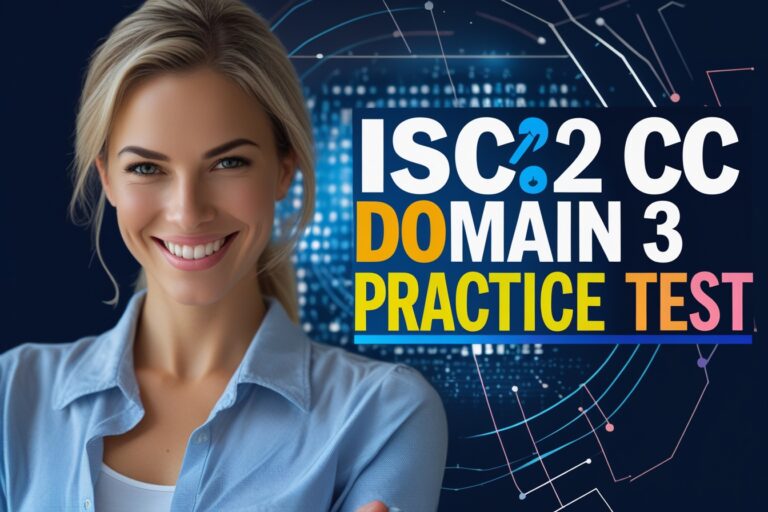1) UDP needs the ……….. address to deliver the user datagram to the correct application process
A. port
B. application
C. internet
D. intranet
2) The …….. was originally developed as a mechanism to enable disk-less hosts to be remotely booted over a network as workstations, routers, terminal concentrators and so on.
A. ICMP
B. BOOTP
C. UDP
D. ARP
3) Which of the following does UDP guarantee?
A. Flow control
B. Connection-oriented delivery
C. Data control
D. None of the above
4) ………. provides a framework for passing configuration information to hosts on a TCP/IP network.
A. Dynamic Host Configuration Protocol(DHCP)
B. Address Resolution Protocol(ARP)
C. Internet Protocol(IP)
D. Internet Control Message Protocol(ICMP)
5) The source port address on the UDP user datagram header defines ………
A. the sending computer
B. the receiving computer
C. the process running on the sending computer
D. the process running on the receiving computer
Table of Contents
Read Also: Solved MCQ on TCP/IP and UDP in Computer Networks
6) The mechanisms supported by DHCP for IP address allocation on a TCP/IP network is/are …
A. Automatic allocation
B. Dynamic allocation
C. Manual allocation
D. All of the above
7) UDP is called a ………. transport protocol.
A. connection-oriented, unreliable
B. connectionless, reliable
C. connectionless, unreliable
D. connection, reliable
8) DHCP in TCP/IP network assigns an IP address for a limited period of time. Such a network address is called a ……
A. lease
B. limited network
C. timed network
D. assigned network
9) UDP does not add anything to the services of IP except for providing ………. communication.
A. node to node
B. process to process
C. host to host
D. interface to interface
10) The use of ……… allows centralized configuration of multiple clients.
A. ICMP
B. BOOTP
C. UDP
D. ARP
11) UDP is an acronym for …………
A. User Delivery Protocol
B. User Datagram Procedure
C. User Datagram Protocol
D. User Delivery Procedure
12) ………… is where users typically interact with the TCP/IP network.
A. Link layer
B. Network layer
C. Transport layer
D. Application layer
13) The local host and the remote host are defined using IP addresses. To define the processes, we need second identifiers called ………
A. UDP addresses
B. transport addresses
C. port addresses
D. TCP addresses
Read Also: Objective Questions on Application Layer in OSI/TCP/IP Model
14) The …………. is responsible for communicating with the actual network hardware.
A. Link layer
B. Network layer
C. Transport layer
D. Application layer
15) UDP packets are encapsulated in …….
A. an Ethernet frame
B. a TCP segment
C. an IP datagram
D. an Ethernet packets
16) ………… is the protocol suite for the current Internet.
A. TCP/IP
B. NCP
C. UDP
D. ACM
17) UDP uses …….. to handle outgoing user datagrams from multiple processes on one host.
A. flow control
B. multiplexing
C. demultiplexing
D. data control
18) ………. provides full transport layer services to applications.
A. TCP
B. UDP
C. IP
D. ARP
19) UDP uses …… to handle incoming user datagrams that go to different processes on the same host.
A. flow control
B. multiplexing
C. demultiplexing
D. data control
20) In the sending computer, UDP receives a data unit from the ……… layer.
A. application
B. transport
C. IP
D. interface
Answers:
1) A. port
2) B. BOOTP
3) D. None of the above
4) A. Dynamic Host Configuration Protocol(DHCP)
5) C. the process running on the sending computer
6) D. All of the above
7) C. connectionless, unreliable
8) A. lease
9) B. process to process
10) B. BOOTP
11) C. User Datagram Protocol
12) D. Application layer
13) C. port addresses
14) A. Link layer
15) C. an IP datagram
16) A. TCP/IP
17) B. multiplexing
18) A. TCP
19) C. demultiplexing
20) A. application
Read Next: Solved MCQ on Physical Layer in OSI Reference Model set-1






